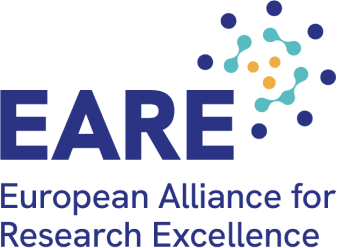
Artificial Intelligence and IP: How the UK can adopt a copyright framework that fosters innovation
On 7 January, we submitted our contribution to the UK’s Intellectual Property Office’s Consultation on Artificial Intelligence (AI) and Intellectual Property (IP).
Considering our commitment to copyright rules that enable an effective use of Text and Data Mining (TDM) and to an open approach to data, our response was focused on the second area explored by the consultation, seeking evidence and views on “Licensing or exception to copyright for text and data mining, which is often significant in AI use and development”.
EARE welcomes the UK’s ambition to remain one of the leading IP environments in the world through a revision of its copyright legislation. As rightly outlined by the UK Government its calls for views, the use of AI has revolutionized many areas of our lives. Yet, it is important that governments find the right balance between protecting copyright and creating an enabling environment for Text and Data Mining and AI-based innovations to thrive. Many jurisdictions have updated their copyright laws to that effect. The UK can become an AI powerhouse if it adopts the right exceptions to existing copyright rules for Text and Data Mining, a key building block for AI. This is what we outlined in our response to this consultation:
Section A: Copyright – text and data mining (TDM)
- Licensing for TDM remains problematic
Regarding the potential introduction of licenses for the purpose of machine learning, EARE would like to draw attention to the fact that licensing could prove problematic for several reasons. To begin with, text and data mining, which works by crawling thousands of different digital sources, is a way to obtain large amounts of public data for the purposes of training models and AI. As long as the TDM user has legal access to a copyright-protected work, either through a license or because they are publicly accessible, they should not have to acquire an additional license to mine that content for the purposes of machine learning. Text and data mining is an automated way to read content one already has access to and so should not be subject to additional licenses.
Additionally, imposing a license requirement on all copyrighted works to protect a small fraction of rights holders would impose unsustainable transaction costs on researchers and startups, slowing down research projects and hindering innovation. Licenses for the purposes of text and data mining and machine learning may therefore have the unwanted effect of encouraging innovators to move to more innovation-friendly geographies. To promote AI innovation, any updates to IP policy should clearly state that the lawful access to and use of data for computational analysis is not subject to additional licenses.
- Preferred policy option: a broad TDM exception
The Copyright, Design and Patent Act should be updated to allow for the reproduction of lawfully accessed works to facilitate TDM, for commercial or non-commercial purposes, by commercial and non-commercial entities. In addition, a broadening of UK fair dealing exceptions to encompass a broad fair use concept, similar to that in the US, would promote innovation and safeguard adverse economic impact to copyright owners. We would urge the UK Government to update its Copyright law in a way that encourages a diverse array of permissive use relationships that serve the needs of the broadest set of rights owners and users.
That is why we believe the current UK exception (option 0), covering only research purposes is too limited, and does not reflect the reality of today’s research, which is often conducted as part of public-private partnerships. Deciding to update UK TDM rules by opting for options 0, 1 or 2 will deter innovators from conducting TDM-related activities in the UK, as many other geographies have adopted AI-friendly copyright rules. From our experience, the only option under which the UK Government would realise its ambitions to become a global “AI-powerhouse” is option 4.
Download the full contribution here.


